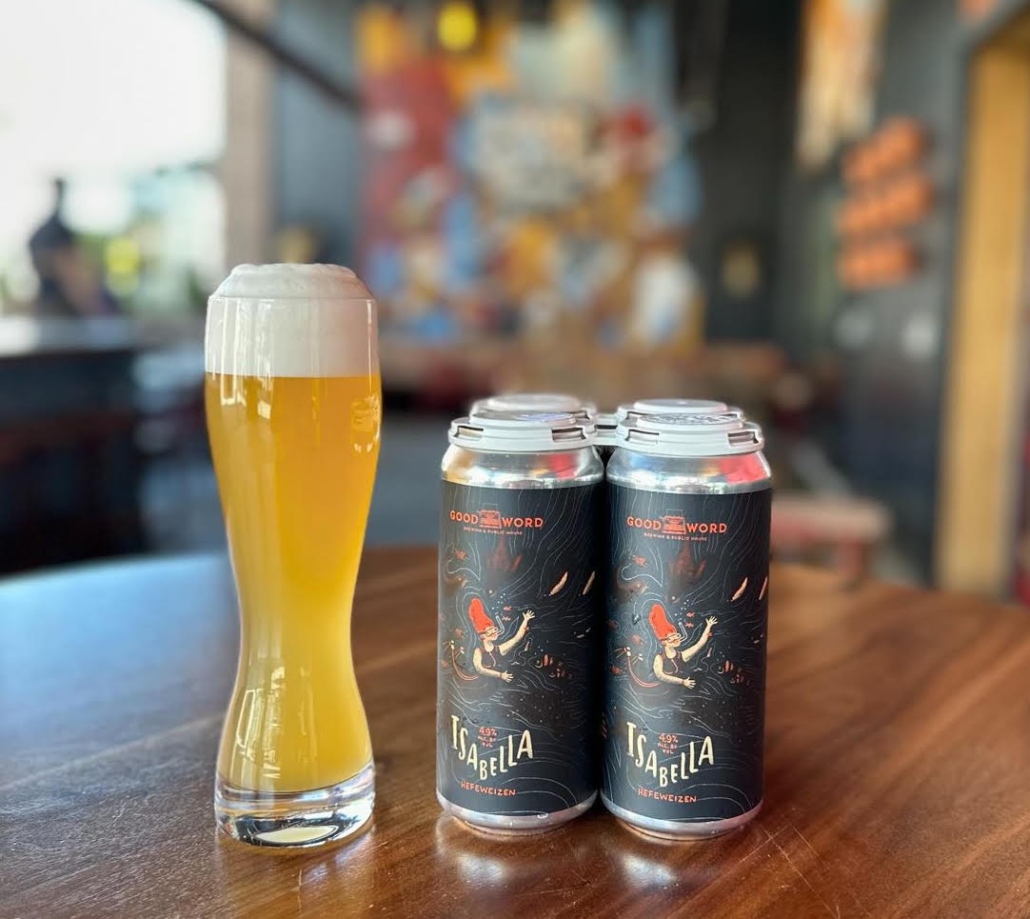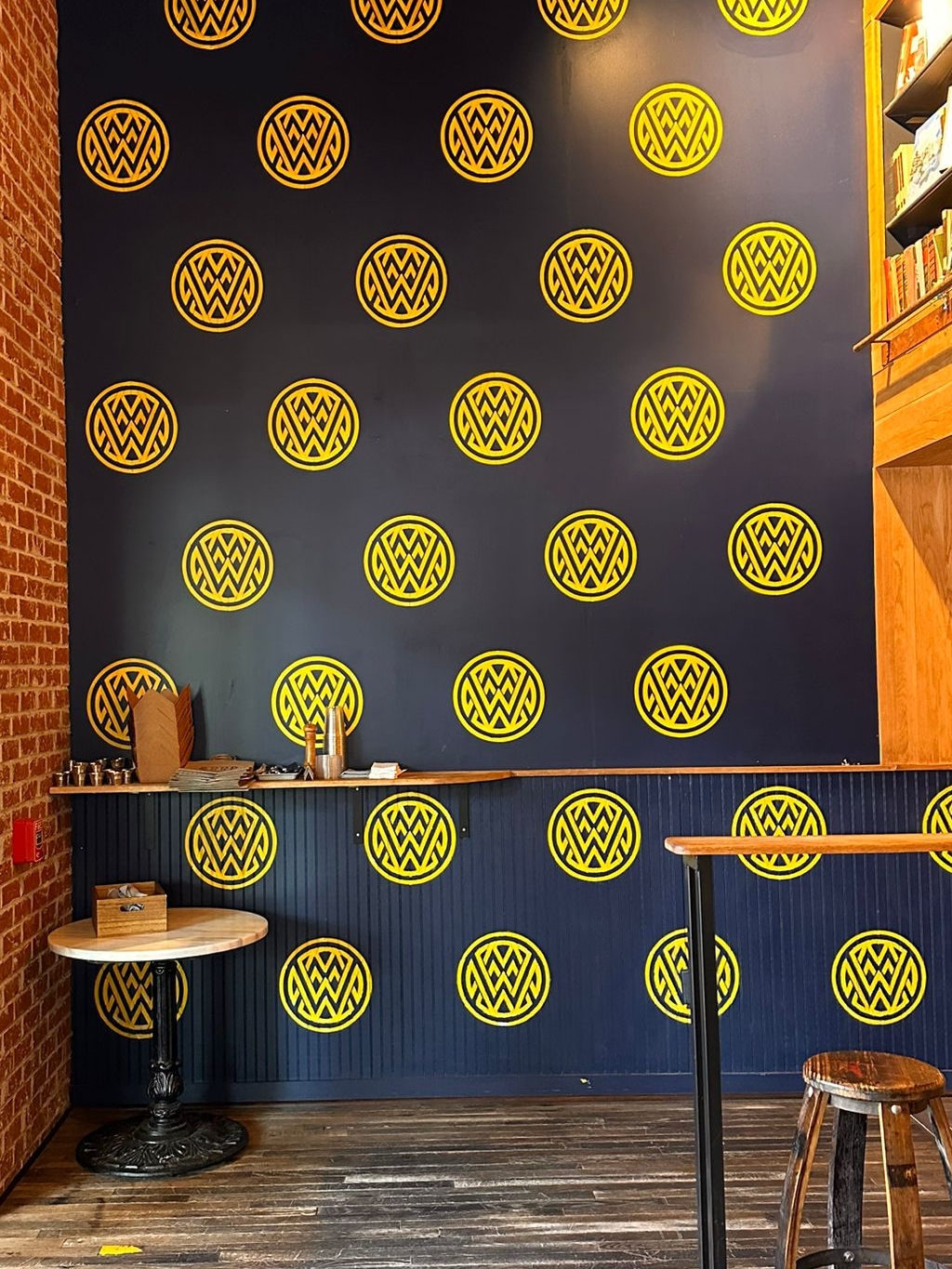THE STORY OF: ISABELLA, 4.9% HEFEWEIZEN
“I view true German-Style Hefeweizen as a brewer’s beer,” says Todd, owner and head brewer here at GWB. “There’s a fine balance between being a sweet, gimmicky banana-flavored mess and a well-crafted brew. I wanted none of that for ours when I first brought the style to Good Word.” As you may know—and you’ve likely heard us talk about it before—tradition is key to what we do here. It’s crucial in how we engage with you, our customers; in how we serve our beers; and in how they’re brewed. It’s central to everything we do, and it was important when developing Isabella.
Those of you who have been regularly coming through our doors here at GWB will probably be quite familiar with Isabella, our 4.9% Hefeweizen. A staple on our beer menu and a firm fan favorite, this seemingly simple and innocuous beer is anything but.

Before we delve into that, let’s talk about Hefeweizen. This style dates back to medieval Germany, and the name itself is a combination of two German words that sum it up perfectly: hefe meaning yeast, and weizen meaning wheat. More modern iterations are sometimes labeled as “white beer” or “white IPA,” but they are one and the same—a style where the flavor comes from both the wheat and the yeast. The flavor is very distinctive, with notes of bubblegum, banana, and clove, and a smooth, creamy mouthfeel. It’s not a bitter style; there’s some residual sweetness that complements the clove spice and brings the flavors together. It’s a beautiful beer to drink—a truly pleasurable experience!
Isabella is no different, and it all starts with the malt. “We use all Weyermann malt products from Bamberg, Germany. Using traditional ingredients from the finest producer in the world is the first step to creating a truly great beer,” says Todd. “I had the opportunity to visit Weyermann a few years back, and it’s incredible—it’s like the malt equivalent of Willy Wonka’s factory!” Seventy percent of the malt base is wheat, with the rest being pilsner malt and a touch of dextrin for body.

With the finest ingredients sourced, it’s time to give them the finest treatment. The mash schedule is a fussy one, but the effort is always worth it, as I’m sure you’ll agree! “I bring the heated water and crushed grain in at 95°F, and I move the mash temperature a number of times, intending to eke out specific flavor contributions and to break down the sugar chains for the yeast so the beer is not sweet but has a kiss of residual sugar to balance the very low hopping rate,” explains Todd. “We end the mash schedule with a 25-minute decoction, where I boil a third of the mash. This is for an even greater malt perception in the final beer.” With the mash sorted, we turn our attention to the fermentation process. As you might know, those very distinct flavors in a Hefeweizen primarily come from the yeast. “Hefeweizen is a yeast-driven beer, and if you let the yeast struggle a little during fermentation, it can create all of these wonderful esters such as bubblegum, banana, and subtle clove notes. We’re doing this intentionally with the yeast to gain those flavors that are synonymous with the style!” Another process employed during fermentation, and one you might have heard us talk about before, is ‘spunding’. A spunding valve is a device that naturally captures CO2, a by-product of fermentation, and uses it to carbonate the beer. This process is important when brewing Isabella as it helps achieve its soft, creamy mouthfeel, which is crucial for the style, bringing the experience together.

The end result of this labor of love is a beautifully fragrant beer with all the expected notes—candy banana, bubblegum, and subtle clove. A nice floral edge and subtle bitterness round off the style, making it incredibly drinkable, while the soft and fluffy body adds elegance and keeps you coming back for more. Isabella is, and has been since day one, a firm favorite among everyone here at GWB, both employees and customers.
Prost!

